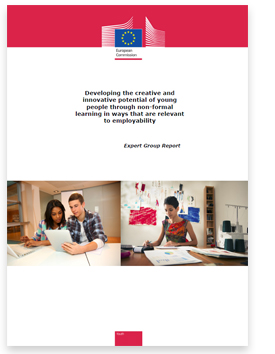In a context of record levels of youth unemployment in Europe, this report is about how non-formal learning and especially youth work can enhance the creative and innovative capacities of young people in ways that are relevant to employability. It goes beyond identifying the skills and competences involved, to present illustrative examples of practice and cross-sectoral cooperation. In arguing that investment in non-formal learning pays economic and social dividends, it is important to keep in mind that young people are more than just a potential workforce, and should not be perceived only in the context of their situation in the labour market. The main message is about the need to improve and widen the recognition of non-formal learning, and not just in relation to employability. A better equipped workforce is required; one that can interact effectively with young people, especially those who are disadvantaged and lack access to the jobs market.
This report is about how non-formal learning and especially youth work can enhance the creative and innovative capacities of young people in ways that are relevant to employability. It goes beyond identifying the skills and competences involved, to present illustrative examples of practice and cross-sectoral cooperation.


Most Commented